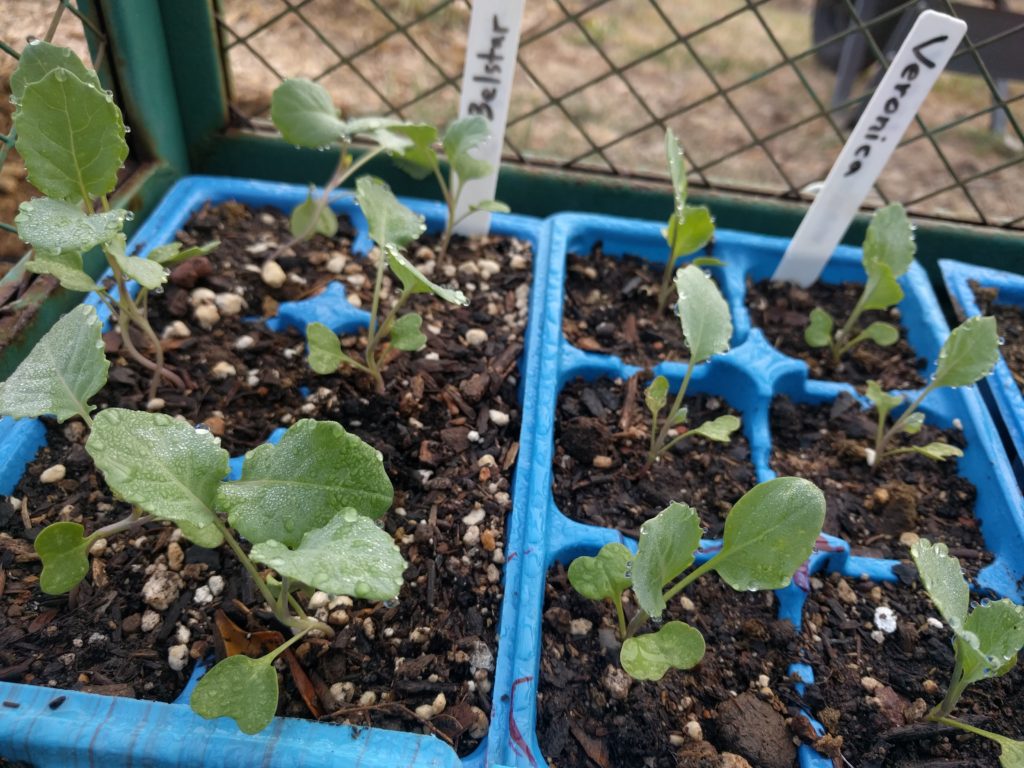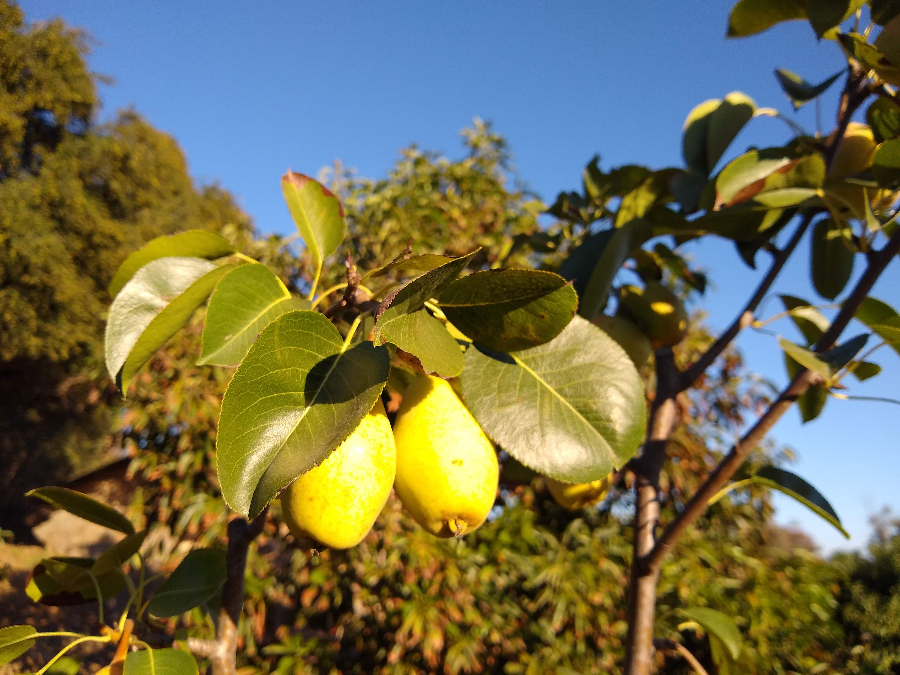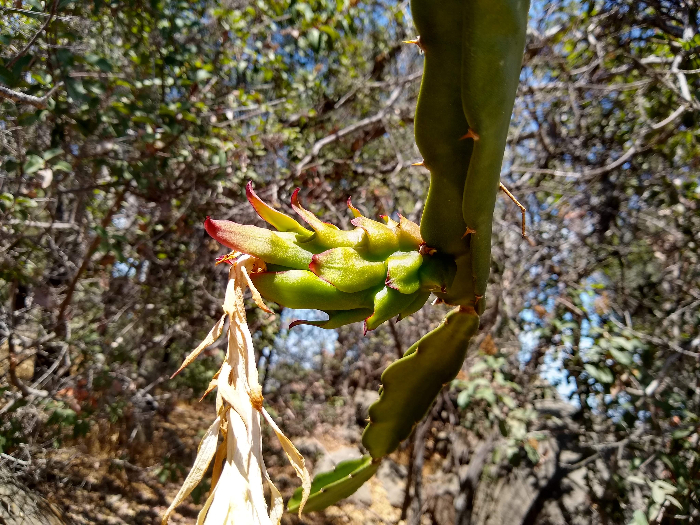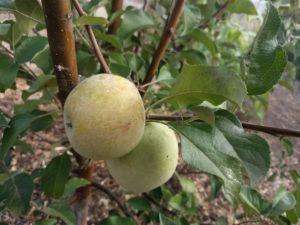In September, summer turns to fall, but summer never goes willingly in Southern California. It always kicks us with one last heat wave. When I was a kid, school started right after Labor Day, and that first week back at school was always the hottest of the year. (Hot like peppers.) Do you remember it that way too?
Nonetheless, now is the time to start the vegetable plants that like to grow through the cool fall and winter. A food gardener who has no gaps in harvest must simultaneously have one eye on today and one eye a few months down the calendar.
Let’s get into specifics.
Vegetables
Sow seeds of broccoli, brussels sprouts, cabbage, cauliflower, kohlrabi, lettuce, beets, carrots, parsnips, spinach, chard, peas, radish, turnips, parsley, cilantro, potatoes.
Plant seedlings of broccoli, brussels sprouts, cabbage, cauliflower, kohlrabi, kale and other greens (mustard, chard, collards).

Fruit trees
It is here at the end of summer when a fruit tree will really tell you if it hasn’t been getting enough water over summer. On citrus, the leaves will cup like taco shells if the tree is thirsty. On most other trees, the leaves will droop. They’ll also get brown tips or margins.
Deciduous fruit trees are done growing for the year. Peaches, plums, apples, apricots — they’re just going to hold what leaves they have until later in fall, but they won’t be making new ones. So if you prune them now, don’t expect new growth until next spring.

Avocados, however, will make one more flush of new leaves starting in September or October. Look forward to that.

Harvest
What are folks harvesting from their yards here in September? (Plan to plant these if you want to eat them from your yard in future Septembers.)
Vegetables: tomatoes, tomatillos, beets, peppers, pumpkins, eggplant, squash, basil, cucumber, melons, beans, corn.

Fruit: pomegranates, passion fruit, figs, dragon fruit, avocados (Lamb, Reed), raspberries, pears (Fan-Stil), apples (Fuji).


Miscellaneous
At the end of summer, I’ll leave you with this. I once encountered a helpful way to remember the different vegetables we grow and eat in the warm seasons versus the cool seasons. In the warm seasons we mostly eat the fruits of vegetables. Fruits? Tomatoes, peppers, zucchini, eggplant, cucumbers, melons — they are all fruit, botanically speaking (“a structure that holds seeds inside”).
In the cool season, we mostly eat the leaves, roots, and flowers of vegetables. Think of the leaves of lettuce, the roots of carrots, and the flowers of cauliflower and broccoli plants. If you don’t pick a head of cauliflower or broccoli on time, it becomes a globe of yellow flowers.
For my posts on growing any of the above vegetables or fruit trees, see the list of all of my Yard Posts HERE
Learn HERE about how my Yard Posts are purely supported by gardeners like you, which is why there are no ads. Thanks!




Thanks, Greg! Another informative post with awesome pics!
Thanks for saying so!
You are inspiring me to branch out and plant during the cool season! Love all the cute pics of your family!
Hurray! And thanks!
Just remember how low the sun’s angle gets in winter, and beware of planting cool-season vegetables just north of a tree, wall, or building. They might be in too much shade to grow well, particularly come December.
Hi Greg! As always, I am loving your website 🙂 Do you ever plant “green beans” in the fall? I am in Riverside, we have similar fall/winter weather to your area–I think. Thanks! ~Danielle
Hi Danielle!
While I don’t ever plant green beans in the fall, I have had some excellent green bean crops go into the fall. They’re similar to tomatoes in that if we have a warm and dry fall — like we’re having right now — the plants from summer will continue to produce well until beyond Thanksgiving. (Are you still getting tomatoes right now? I am still getting good ones, especially the small-fruited types.)
But I think you’ll find that if you start green bean plants right now (mid-November), they’ll start to grow but they won’t mature and produce beans by the time it inevitably gets too cold in December or January. My mature green bean plants have always finally gotten zapped by successive cold nights or little frosts sometime in December or January. That’s what normally happens.
Thanks Greg, your answer, as always, is very helpful. I do have tomatoes still growing right now and peppers. I started some green bean seedlings but will replace them with something else more weather appropriate . Your website and help are wonderful. Thanks again, your time is greatly appreciated!
Hi I just read your post about a year ago on the Dapple Dandy Pluot – do you fertilize your tree? Curious as to with what and when. I am making a chart for all of my trees. My tree is less than a year old. it did produce 2 pluots this year.
Hi Pam,
I don’t fertilize my Dapple Dandy pluot tree, not exactly. I do keep a layer of arborist wood chips under it for mulch, and those wood chips do break down to fertilize the tree eventually.
Hi Greg – we do the same, mulch, but I read where that depletes/negates the nitrogen in the break down process. Do you think if I baby it by placing plentiful handfuls of earth worms around it that will be “sufficient”? No 10-10-10 ???? Thank you
Hi Pam,
Don’t worry about the nitrogen depletion idea. I’ve never seen evidence of it on any species of fruit tree that I’ve grown or observed.
Read some more about using wood chips as mulch, and ultimately a source of nutrients, here: https://www.researchgate.net/publication/315662938_Using_arborist_wood_chips_as_a_landscape_mulch_WSU_Extension_Fact_Sheet_FS160E
I want to plant lettuce from seed in September. Can I plant seeds directly in ground now? I am in Palos Verdes (zone 14). Thank you!
Hi Anna,
Yes, you can sow lettuce seeds directly in the ground here in late September in Palos Verdes. Just be aware that lettuce seeds need to be sown shallowly (don’t bury them under much dirt or compost) and they need to be kept consistently moist. So the challenge is just to maintain that moisture in the top level of soil while the seeds are germinating.
As long as I can remember my mom always said it’s horrible for kids that first week of school (Labor Day). She came here in the 40’s. My memory has always been the same. It’s easy to find us old timer native southern Californians with that one question.
On another note, my mom has always said that November is the nicest month in San Diego. I tend to agree.
Regarding your question. It’s September 15 and I’m still harvesting Okra and Kale. South Orange County.
Ahh, recalling the start of school after Labor Day. I would sew up my new “winter” wardrobe for the start of school only to need to pull out my summer clothes for the first couple weeks. That would be here in Corona. Biggest change is that kids today start school the 3rd week of August!
I’m in my second planting of brassica seedlings as white moths absolutely destroyed the first batch. For the second batch, I built a Minnie hoop house out of old wire, free nursery trays and tulle from my sewing stash. I find it difficult to not take destruction of my seedlings personally and I give the stink eye to the moths whenever I see them. How dare they eat my seedlings down to the nub! This is the first year that I’ve ever seen the destroyers in my garden.